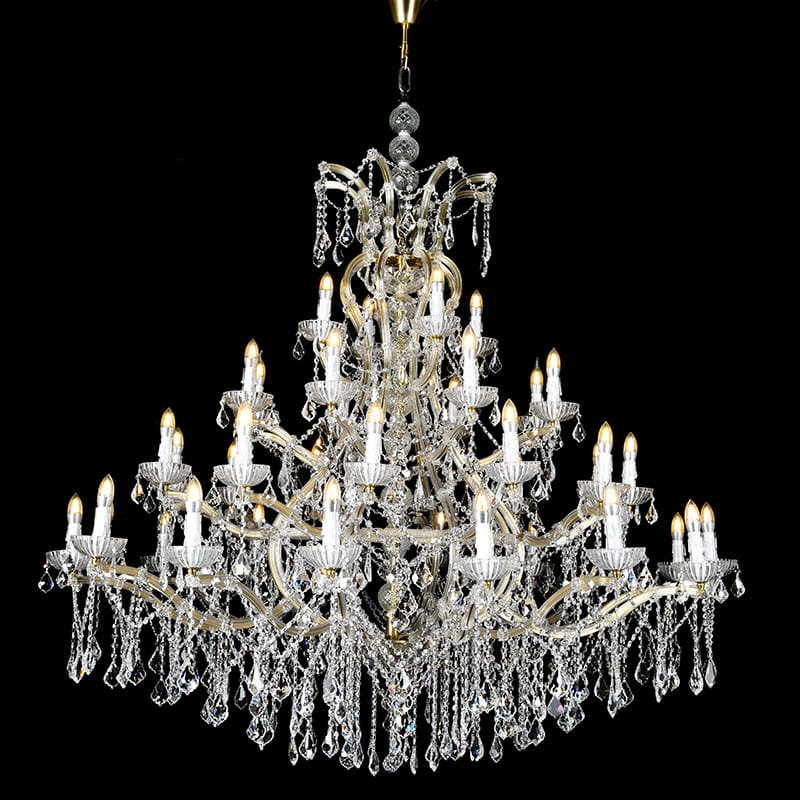Last Updated on February 28, 2020 by Gino Borghese
If you absolutely adore chandeliers and all manner of ornate, beautiful lighting, then you really need to visit the Palace of Versailles just outside Paris, France. This is probably one of the most amazing examples of glorious lighting in the world and can be found in the Hall of Mirrors.
The Hall of Mirrors is one of the most renowned rooms of the palace. It is 73m long and holds a ceiling adorned with the most wonderful paintings by Le Brun, detailing the triumphs of Louis XIV’s reign. There is no finer example of opulence and luxury than that which can be witnessed inside the Hall of Mirrors. The ultimate in lavish luxury at the time was the sheer number of mirrors installed – no less than 357! For the effects of increased light and symmetry, the mirrors are all positioned opposite large windows. At the time of construction, mirrors were highly expensive items with most knowledge being held by the glassmakers of Murano in Italy.
The walls of the hall are adorned with marble and each arch of mirrors is separated by a sculpture made from gold. Not often will you find yourself surrounded by such precious and expensive material! The hall also used to house beautiful silver furniture which was sadly sold to finance some of Louis XIV’s war campaigns.
When royalty resided here, the hall was primarily utilised for pleasant strolls and as a meeting place. Despite its magnificence, the hall was rarely used for ceremonies or occasions. It might have been decided that the hall was imposing enough to walk through with the whole court watching, without placing a throne in there too. One state occasion that did occur in the hall was the marriage of Louis XVI to Marie Antoinette in 1770.
The reason for the construction was to connect the apartments of the King and Queen. There is a War Salon situated to the north and a Peace Salon on the south side. The hall was used every day when Louis XIV walked to Mass and the court would often gather together here to watch as the royal family passed through.
The whole of the Versailles Palace became the focus of worldwide awe and wonder, with many architects and builders attempting to imitate what they had seen in France. It was a difficult place to light though, especially with candles. The use of candles was sparing so as protect the delicate artwork and ceilings from the effects of smoke damage. Mirrors became an effective way of increasing light levels and they became a bit of an obsession with the Sun King, hence the amount situated in the Hall of Mirrors.
Candles could be used to enhance the effect of the mirrors and on special occasions, up to 20,000 candles were used in the numerous chandeliers to create a luminescent corridor of light and beauty. To experience such magnificence might well inspire you to install your very own antique-style chandelier or modern crystal chandelier in your home.
Before the hall existed, there was a terrace that connected the King and Queen’s apartments. This was later demolished due to suffering from exposure to bad weather and replaced with the current structure as designed by one of Louis XIV’s favourite architects, Jules Hardouin-Mansart. The construction began in 1678 and took 6 years to complete.
The ceiling painting depicts all of the artistic, economic and political successes enjoyed by France during the first 18 years of the reign of Louis XIV. The vaulted ceiling consists of 30 pieces of art, some with the use of allegories taken from Antiquity to illustrate both military and diplomatic achievements. The 357 mirrors represent the prosperity of the era, albeit only for the higher echelons of society.
Despite not being used often for state occasions, the Hall of Mirrors was often opened up for scenes of lavish entertainment and masked balls, for example. As you walk through under the array of glittering chandeliers, it’s impossible not to imagine the men and women of the court in their finery, coyly placing a mask to their face and taking each other by the arm for a dance.
Ever since its construction, foreign dignitaries and diplomats have been received into the hall and continue to be today. Can you imagine a more ostentatious and impressive setting in which to be invited? One major historical event to take place inside the Hall of Mirrors was the signing of the Treaty of Versailles on 28th June 1919 officially ending the First World War.
If you like mirrors and light take a look at our Designer Mirrors for ideas to create your own.
